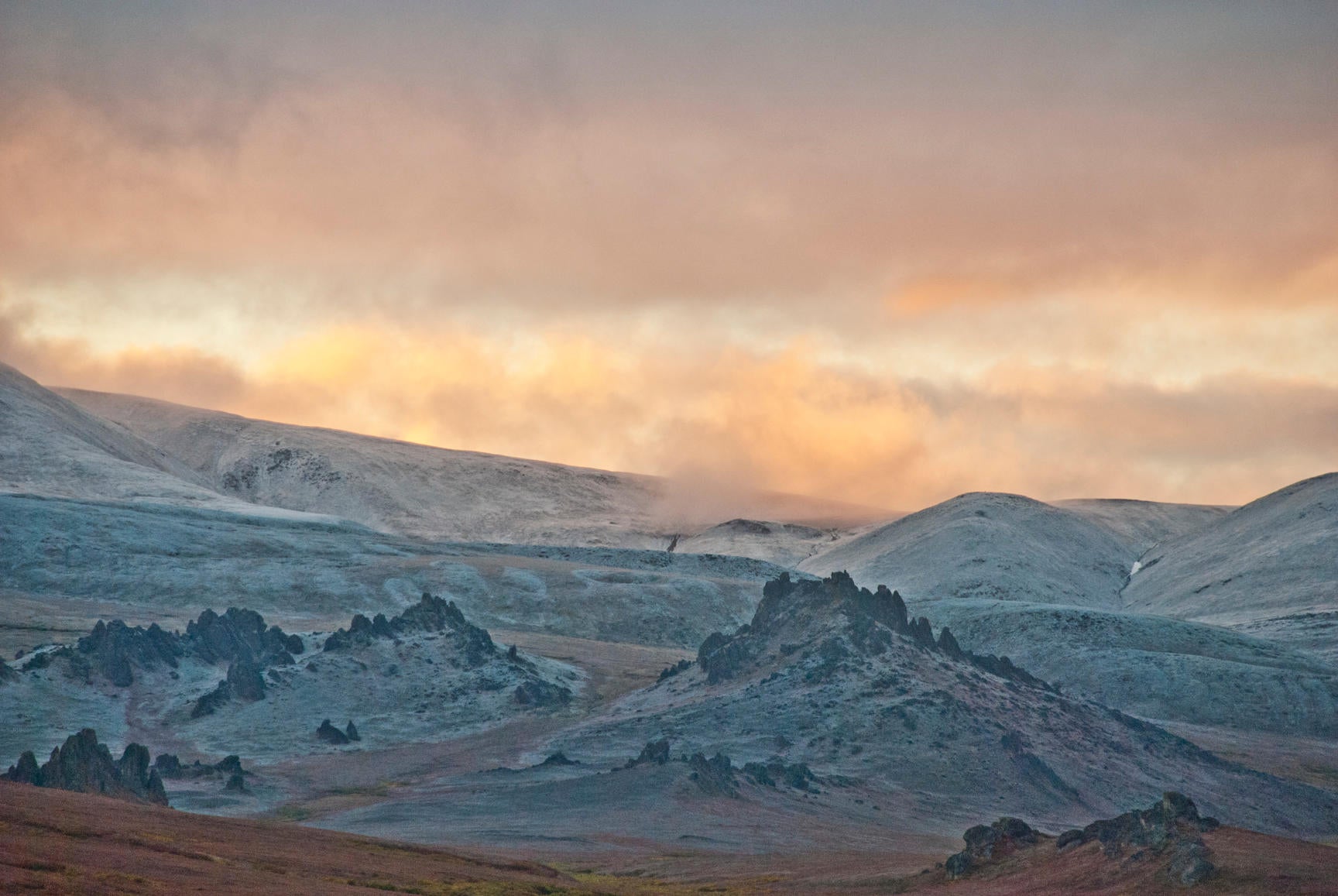
Science has long known that people living in what is now Siberia once walked (and later paddled boats) across the Bering Strait into North America. But new evidence now shows that these early migrations weren’t one-way trips: in a study published on Thursday in Current Biology, researchers say they have uncovered traces of Native American ancestry in the DNA of Siberians who lived centuries ago.
This American heritage—still present in the genomes of some Siberians today—adds to a scattering of archeological evidence suggesting that North Americans were in contact with their northern Asian neighbors for thousands of years before Europeans arrived.
The discovery is not wholly unexpected. “Human movement is rarely unidirectional,” says the new study’s co-author Cosimo Posth, an archaeogeneticist at the University of Tübingen in Germany. “There is usually some back and forth.”
Exactly when and how people first arrived in the Americas is one of the longstanding debates in archaeology. Hypothesized dates vary widely, but many researchers agree that the earliest migrants likely traveled across the Bering Land Bridge, a strip of land that periodically connected northern Asia to modern-day Alaska in prehistory. This transcontinental highway succumbed to rising sea levels sometime between 11,000 and 10,000 years ago, but that didn’t stop migrations between the landmasses. Genetic studies and archaeological digs indicate that people from Siberia made the move into North America several more times, including as recently as 1,000 years ago.
But even though a lot of research has focused on reconstructing the arrival of people into what is now Alaska, “very little is known about migration in the other direction,” Posth says.
That is slowly starting to change. A 2019 study found genetic evidence that ancient people living on opposite sides of the Bering Strait were in contact with each other. And a small number of archeological finds in Alaska—including the discovery of 15th-century glass beads that may be of Venetian origin—have pointed toward ongoing trade between North America and the rest of the world.
But how far from the strait these ties extended is unclear. Little is even known about how people moved around within Siberia in the past few thousand years. Hoping to reconstruct this part of the region’s history, Posth and his colleague’s sequenced DNA from 10 ancient people whose remains were unearthed at various sites around Siberia.
The oldest of these samples dates back 7,500 years. The study also included genomes from three people who lived on the Kamchatka Peninsula—which dangles down from the Russian Far East well to the southwest of the Bering strait—just 500 years ago. These sequences were the first ancient DNA samples to come out of the remote peninsula, Posth says.
Siberia was once a hotbed of migration that put ancient Siberians in contact with populations as distant as Japan and Greenland, the researchers found. Their analysis also revealed a previously unknown connection between Native Americans and people who were living in Kamchatka a few centuries ago. The team found that the ancestors of these Kamchatkans had met with North Americans at least twice before: once between 5,500 and 4,400 years ago and again around 1,500 years ago. These connections show the influence of Native Americans farther inland than previous studies.
Posth says he expected to find some evidence of Native American contact in Siberia, but he was surprised by how long ago these run-ins had occurred. Those ancient encounters weren’t the last time Kamchatkans interacted with North Americans either. The team found an even higher percentage of Native American DNA in the genomes of modern Kamchatkans, suggesting that the people of the peninsula were also in contact with North Americans during the past few centuries.
It remains unclear how DNA from North America made its way into Kamchatkans, Posth says. The Kamchatkans’ ancestors could have inherited the DNA from other Siberians carrying this heritage, or they may have come into contact with Native Americans themselves. Still, Posth and his colleagues’ study builds on previous genetic research by showing that DNA was moving from North America into Siberia, says Dennis O’Rourke, an anthropological geneticist at the University of Kansas, who was not involved with the new paper.
The fact that people from northern Asia and North Americans did come into contact isn’t that surprising if one considers how close the two landmasses are to each other, says Anne Stone, an anthropological geneticist at Arizona State University, who also was not involved with the new research. For one thing, the Aleutian Islands (where the Aleut people historically hunted and traded) form a chain that starts just off southwestern Alaska and runs westward to point directly at Kamchatka.
As for the Bering Strait, Stone says that although the region’s early inhabitants may have become isolated from one another after the disappearance of the Bering Land Bridge, later generations wouldn’t have been so limited. “They’ve got boats,” Stone says. “So they could visit and trade with each other.”



